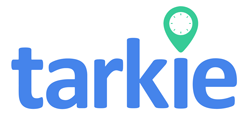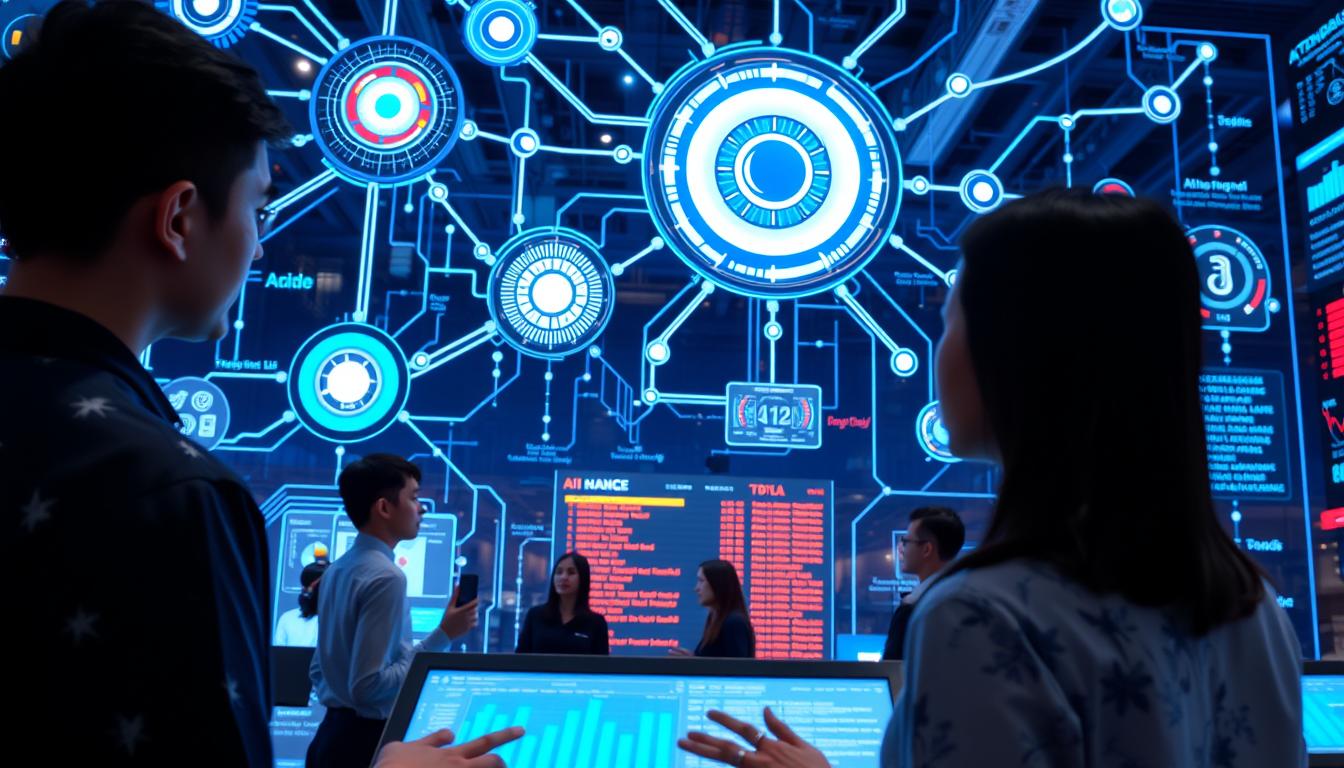Are we ready for a new era in attendance management? Traditional methods are being questioned. The rise of AI and automation is changing workplaces and making them more efficient. Studies show that 57% of companies using AI solutions see a huge drop in administrative tasks.
These new systems are very accurate, cutting down human errors by up to 90%. The global AI attendance market is expected to hit $1.2 billion by 2025. In the Philippines, small and medium businesses are seeing how automation boosts productivity and keeps employees happy.
For businesses looking to improve their workflow, AI attendance solutions can be a game-changer. They offer cost savings and make employees happier. Check out how your business can use effective timekeeping software to stay ahead in attendance management.
Key Takeaways
- AI-driven attendance systems significantly reduce administrative tasks, freeing up valuable employee time.
- The integration of attendance automation is essential for maintaining competitiveness in today’s market.
- Enhanced accuracy from AI solutions positively impacts payroll, minimizing discrepancies.
- Companies using AI in attendance see a notable rise in employee engagement and morale.
- Predictive analytics can effectively reduce absenteeism rates by identifying patterns early.
The Evolution of Attendance Management
Attendance management has changed a lot over time. At first, companies used old punch-card systems. These systems were slow and often wrong. The American Payroll Association found that 43% of companies had problems with payroll because of bad time tracking.
Then, AI came into attendance management. It brought real-time data and better analytics. This helped businesses work smarter and make better choices. For example, IBM cut down on absences by 20% with new time and attendance systems.
Now, we have automated attendance systems with cool features. They can connect to the cloud and keep data safe. XYZ Corp saw a 40% drop in unauthorized absences with an AI system. Features like facial recognition and geofencing help track work done from anywhere.
Attendance management keeps getting better. It’s all about being more efficient, secure, and engaging for employees. With AI, HR teams can focus on big-picture tasks. This keeps businesses ahead in tracking attendance.
Challenges of Traditional Attendance Tracking
Traditional attendance tracking systems face many challenges. They often lead to data entry mistakes, causing problems in payroll. For instance, HR teams spend a lot of time checking and fixing these errors. This makes their work much harder.
Errors in payroll due to manual attendance issues can be very costly, mainly for small and medium businesses. Also, practices like buddy punching lead to attendance fraud, making tracking harder. Without real-time insights, keeping accurate records is tough.
Traditional methods also don’t fit with today’s work trends, like remote work and flexible hours. An attendance management software that adapts to these changes is key for managing diverse workforces. The flaws in old systems show why moving to automated solutions is crucial. These new systems offer accurate, timely data, improving how we manage our workforce.
AI in Attendance: Revolutionizing Data Capture
AI is changing how we track attendance by making it automatic. This makes data capture more accurate and efficient. Advanced AI algorithms help organizations track attendance better, reducing problems seen with old methods.
Reducing Human Error through Automation
AI greatly cuts down on mistakes made by humans. A mid-sized company saw a 30% drop in errors after using AI for attendance. This is because AI eliminates the need for manual data entry, reducing errors to 1% from 5-10%.
This improvement not only cuts down on mistakes but also helps follow labor laws better.
The Impact of AI on Timekeeping Accuracy
AI has made timekeeping much more accurate. Companies using AI have seen a 20-30% boost in time accuracy. Features like facial recognition and biometric authentication help prevent “buddy punching.”
Real-time monitoring and predictive analytics also help manage the workforce better. They provide insights into attendance patterns, helping plan for busy times.
Benefits of Automated Attendance Systems
Automated attendance systems bring many benefits to businesses. They make operations smoother and boost employee happiness. These systems save money, which is great for small and medium-sized businesses.
They cut down on the time spent on tracking who’s in and who’s out. This means more time for activities that help the business grow.
Cost Savings and Efficiency Improvements
These systems help lower costs for businesses. Companies using them have seen a 20% reduction in attendance management expenses. Also, payroll processing time can drop by up to 50%.
This lets payroll teams work on more important tasks. They can spot trends and solve problems 40% faster than before.
Enhancing Employee Satisfaction with Real-Time Insights
Automated attendance systems also make employees happier. A big 92% of HR people say it improves the work experience. It makes employees feel more accountable, with over 70% saying they’re more responsible for their attendance.
Seeing attendance patterns makes things more open and honest. This leads to better morale among employees.
Integrating Biometric Solutions for Security and Accuracy
Biometric solutions like fingerprint and facial recognition are changing attendance management. They make attendance tracking more accurate and efficient. This direct check at entry points helps prevent time theft and ensures accurate records.
Biometric systems do more than track who’s there. They also boost workplace safety. This makes them great for industries like manufacturing and retail, where both accuracy and safety matter. Employers get reliable attendance data, and employees enjoy a safer work environment.
Here are some key benefits of using biometric solutions:
- Reduction in payroll errors: Companies using these systems see a big drop in payroll mistakes, sometimes up to 50%.
- Time savings: Automated attendance tracking with biometrics makes payroll processing 40% faster.
- Decrease in attendance fraud: Biometric systems help cut time fraud by up to 30%, including buddy punching.
- Improved productivity: These technologies lead to a 30% increase in employee productivity.
The growth of biometric solutions in attendance management marks a move towards better tools. These tools enhance operations and create a secure, efficient workforce. This technology is key for businesses aiming for top-notch management and security in attendance.
Adaptive Learning and Predictive Analytics in Attendance Management
Adaptive learning and predictive analytics are changing how we manage attendance. These technologies help organizations understand employee behavior trends. This way, they can create better work environments.
Predictive analytics looks at past data to spot patterns in who misses work. It helps find trends in attendance. This approach makes the workplace healthier and boosts productivity.
Identifying Patterns and Trends in Employee Behavior
AI-driven analytics is key in spotting attendance patterns. For example, it can show when more people are absent. This lets managers tackle the issues head-on.
Predictive models can guess who will miss work with 85% accuracy. This gives businesses a chance to plan better. It helps in making plans to keep employees from missing work too often, which is crucial in some jobs.
Proactive Interventions for Attendance Challenges
Using adaptive learning and predictive analytics, companies can tackle attendance issues early. For instance, virtual classrooms like Google Classroom help employees stay on track. AI chatbots also help with mental health issues, which can cause people to miss work.
These steps make sure employees feel supported. This can lead to better attendance and happier workers.
| Technology | Impact on Attendance Management |
|---|---|
| Adaptive Learning Platforms | Customizes learning experiences, potentially increasing engagement and reducing absenteeism. |
| Predictive Analytics | Forecasts absenteeism trends with high accuracy, allowing for timely interventions. |
| AI Chatbots | Provides immediate access to mental health resources, addressing one root cause of absenteeism. |
| Data Dashboards | Aggregates information on attendance and performance, assisting in strategic resource allocation. |
The Role of IoT and Geolocation in Attendance Tracking
The use of IoT in tracking attendance has changed the game. It uses geolocation to automate clock-ins and outs. This lets employees check in based on where they are, making attendance tracking more accurate and less prone to errors.
In places like the Philippines, where workers often face connectivity issues, geofencing is a game-changer. IoT devices help track attendance in real-time, even for teams spread out over large areas. This makes attendance tracking more reliable and accurate, solving many problems of old methods.
IoT systems give businesses instant data on attendance, overtime, and leave requests. This helps modern businesses run more smoothly and keeps employees happy. With these new tools, clocking in is easier than ever, making workdays more efficient.
AI-Driven Attendance Automation Trends
In recent years, a big change has happened in AI attendance trends. Advanced technology has made old attendance systems smarter. Now, they are more efficient and accurate. These new systems give real-time data and spot trends, helping businesses make better decisions.
Today’s attendance systems have cool features like automated reports and finding odd patterns. They help track employee hours better and cut down on mistakes. A 2022 Gallup study found that using AI for attendance can lower payroll mistakes by 65%. This move to AI is making companies more efficient and saving them money.
Here are some key stats on automation in attendance:
| Statistic | Impact |
|---|---|
| 80% of companies automating time tracking | Reduction in payroll errors by up to 60% |
| 15% increase in productivity | Attributed to automated attendance systems |
| $1,800 in annual savings per employee | By minimizing time theft and reducing overtime costs |
| 40% rise in billable hours | Reported by a marketing agency in three months |
| 30% increase in employee accountability | From adopting automated time tracking solutions |
Looking ahead, AI will keep being key in attendance management. Companies using these systems see big wins, like cutting admin costs by 30% and boosting employee happiness by 40%. This shows a bright future for better work efficiency and productivity.
The Future of Attendance: AI and Automation Trends
The world of attendance management is changing fast, thanks to AI. This change is big in healthcare and retail. These sectors are using AI to make attendance tracking better and more accurate. They’re also using automation to make things easier for everyone.
How Healthcare and Retail Industries Are Adapting
Healthcare and retail are using new AI-based attendance solutions. They need to track time well to meet rules and staff levels right. Automation has helped them a lot, leading to:
- Up to 60% fewer payroll mistakes
- 15% more productivity
- Save about $1,800 a year per employee
By adopting these trends, they make their work flow better. AI helps them guess who will be there and when. This makes managing the team easier.
Success Stories from SMEs in the Philippines
In the Philippines, small and medium businesses have seen big changes with AI in attendance. They’ve cut costs by 30% and made employees happier. Here’s what they’ve achieved:
- 75% less buddy punching, saving money.
- 40% more engaged and productive employees.
- More reliable data, less error in tracking.
They’re using advanced biometrics and mobile apps for tracking. This makes getting data faster and easier, boosting efficiency a lot.
Data Privacy and Ethical Considerations in Attendance Management
As companies use AI for attendance management, data privacy becomes a big issue. They must follow strict rules to handle employee data right. This means sticking to laws like the General Data Protection Regulation (GDPR) to keep employee info safe.
Being open about how data is used helps build trust with workers. Companies need to tell employees how their data will be used. They also have to keep this data safe, like attendance records and biometric data.
Getting clear consent from employees before using their data is key. This shows respect for their rights and builds a responsible work culture. Being open about data use helps employees trust the system more.
AI tools that follow privacy rules can make attendance tracking better and more accurate. They help reduce errors and time theft. These systems are good at tracking attendance while respecting users’ rights.
As businesses use more advanced attendance tools, they must balance tech with ethics. Following rules for attendance helps protect data and shows the value of doing things right at work.
AI-Powered Tools for Enhanced Employee Well-Being
AI tools are changing how companies care for their employees. They use data from wearables to understand stress and productivity. This helps in making work better for everyone.
Companies using AI see big improvements. For example, 51% of employees say teamwork gets better with AI tools. This makes work more enjoyable and shows a caring culture.
- Companies can predict when the office will be busiest with 85% accuracy. This helps plan better work schedules.
- AI helps keep employees happy by spotting and fixing issues early. This boosts satisfaction by 30%.
- 73% of employees want a work space that fits them. AI makes this possible by booking desks and rooms easily.
AI tools make work smoother and help companies connect with their team. As AI becomes more common in wellness efforts, it will likely make employees happier and more loyal.
Conclusion
The future of attendance management is changing thanks to AI and automation. Companies in the Philippines are adopting these new tools. They make work processes smoother and help employees feel more connected to their jobs.
Old methods often led to mistakes that could harm pay and trust. But, moving to automated systems is key. It’s not just good; it’s necessary.
AI face recognition is a top choice for tracking attendance. It cuts down on errors, making work more efficient. This also builds trust among employees.
These systems do more than just track attendance. They help reduce mistakes in payroll too. This is a big win for everyone involved.
The demand for better workforce management is on the rise. AI and automation in attendance are becoming the norm. Companies that invest in these technologies will thrive in today’s work world.
They’ll be ready to handle the challenges of modern work. This leads to a happy and productive team.



